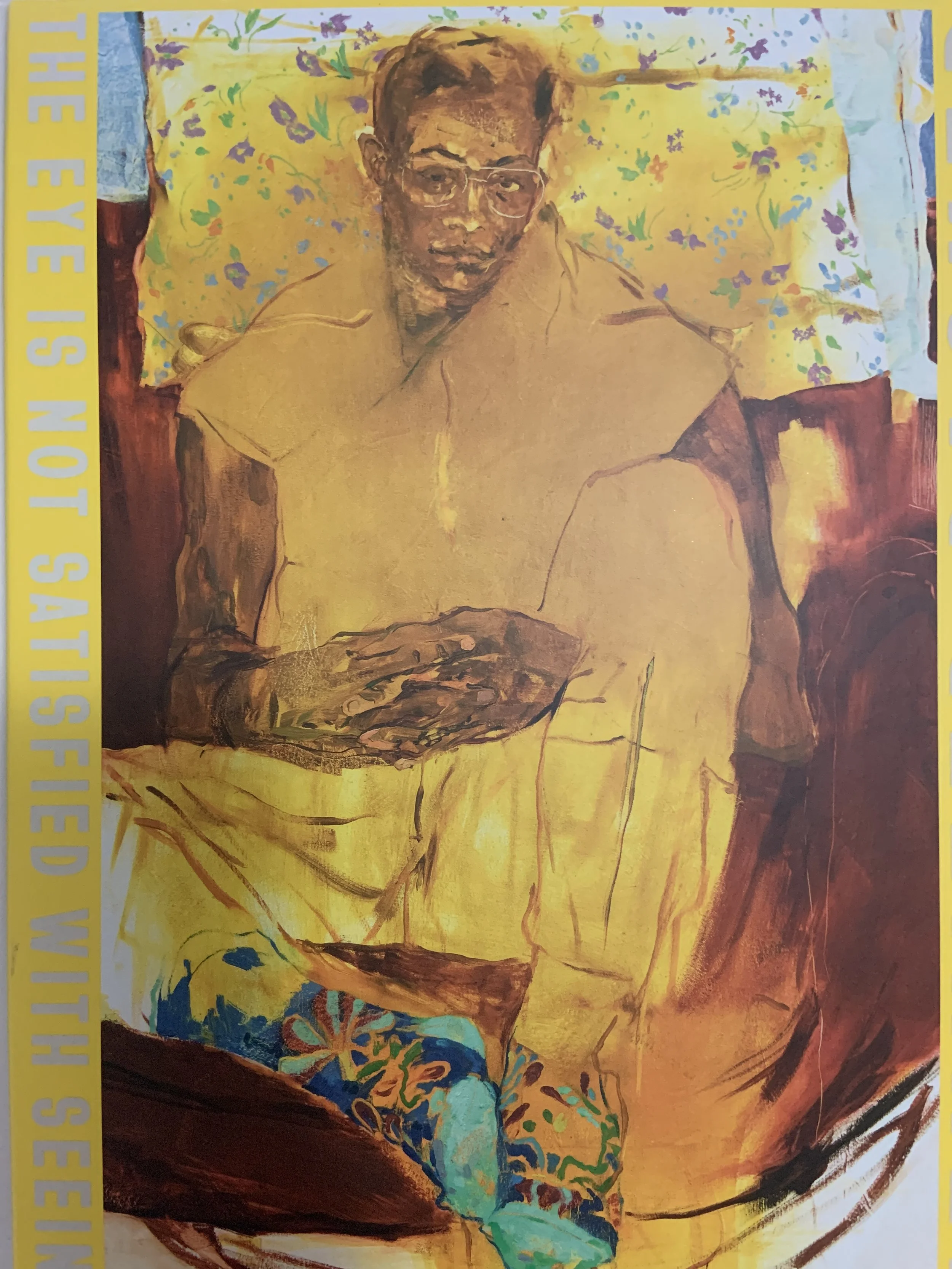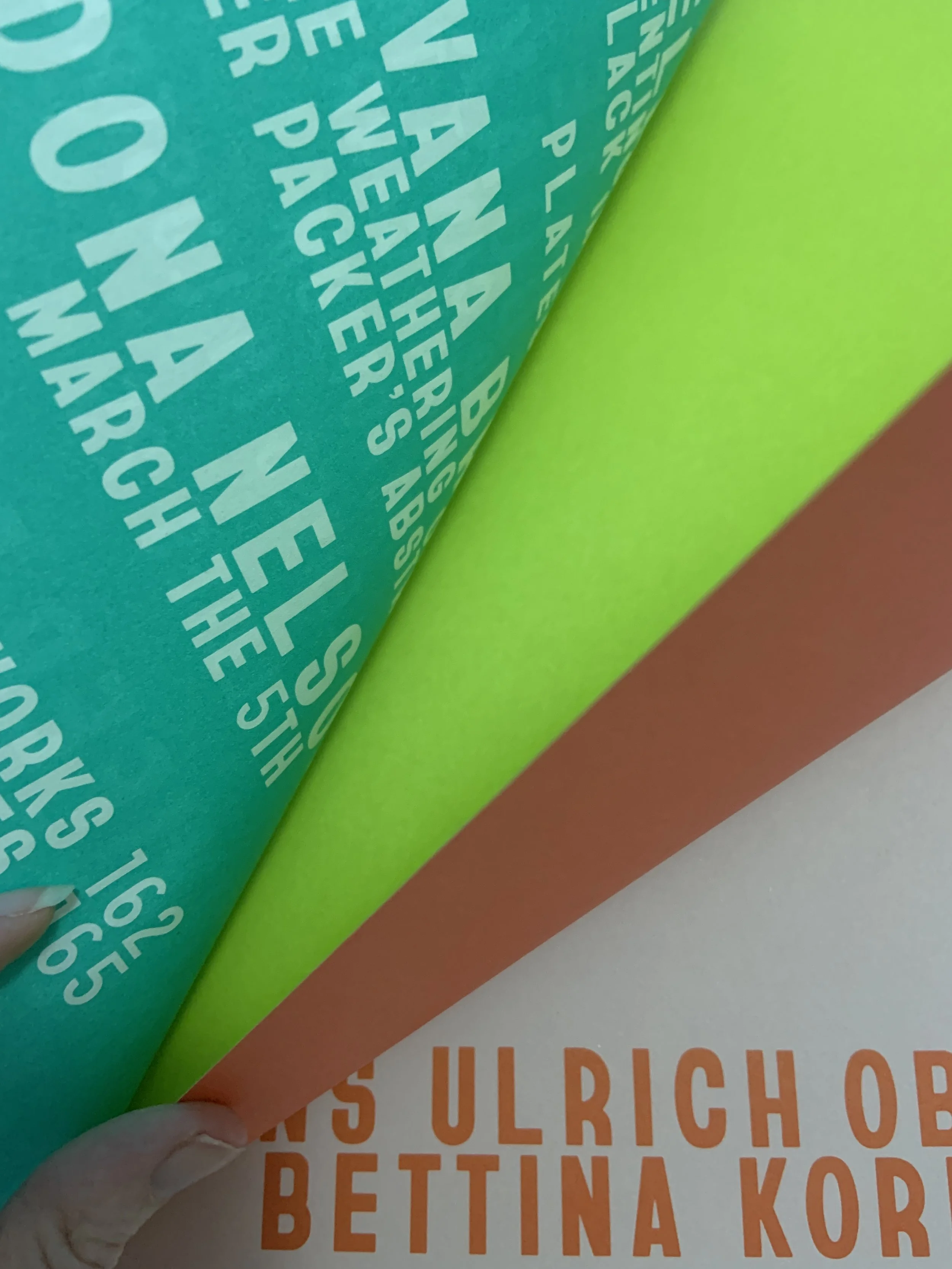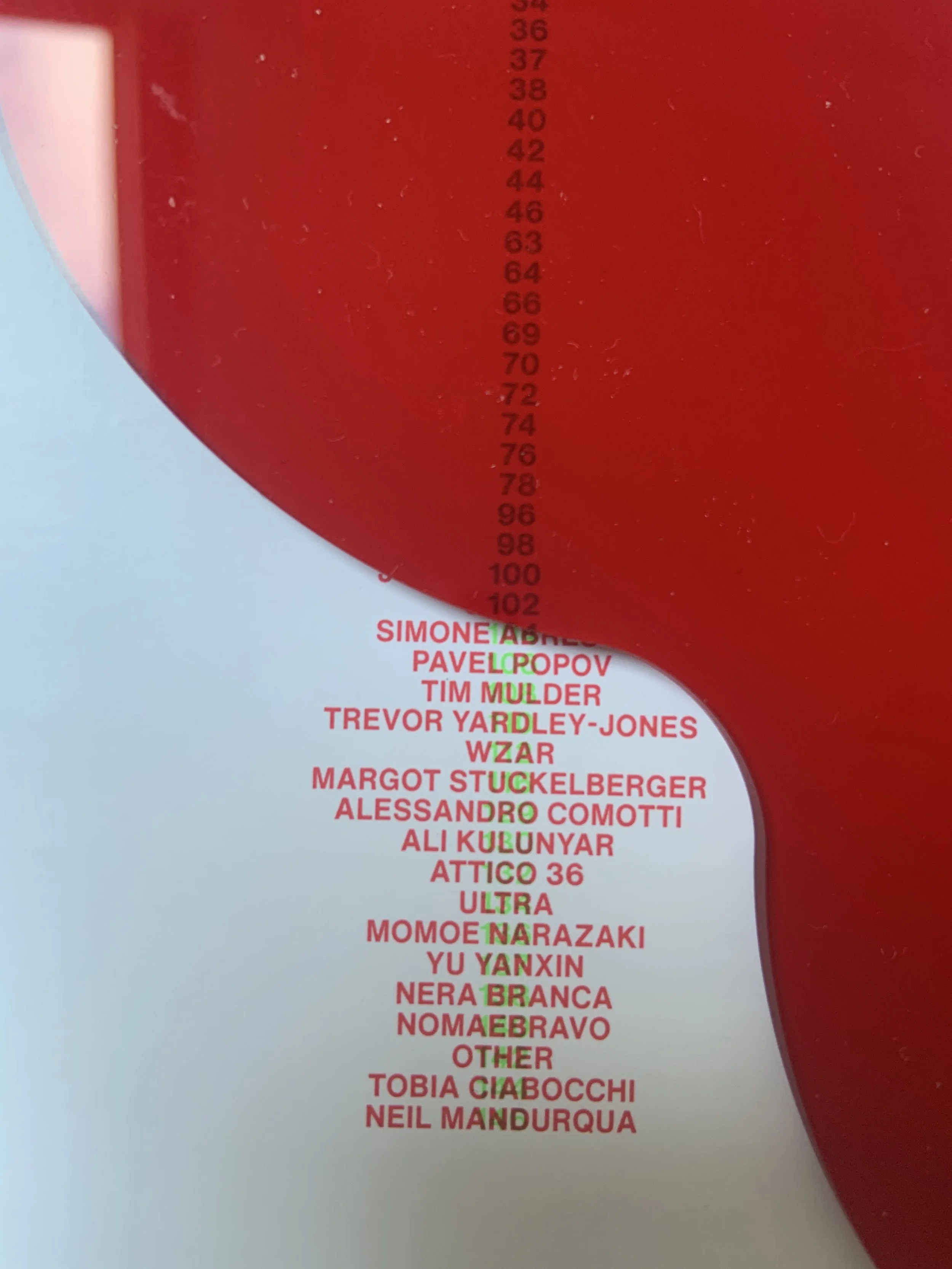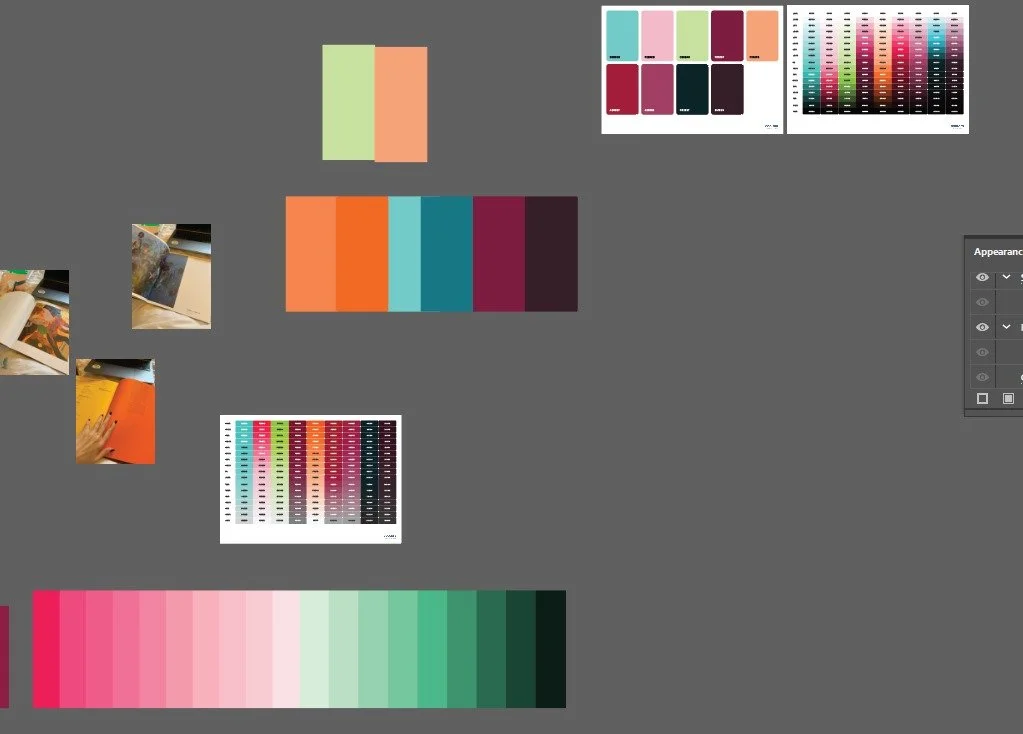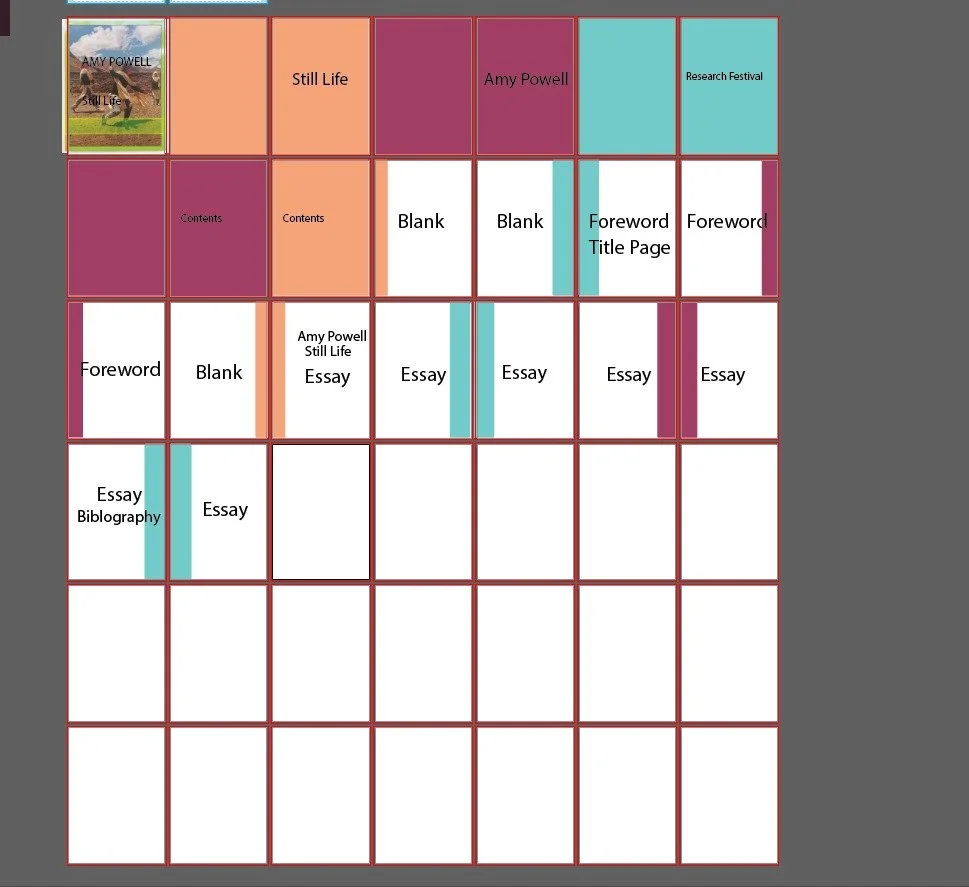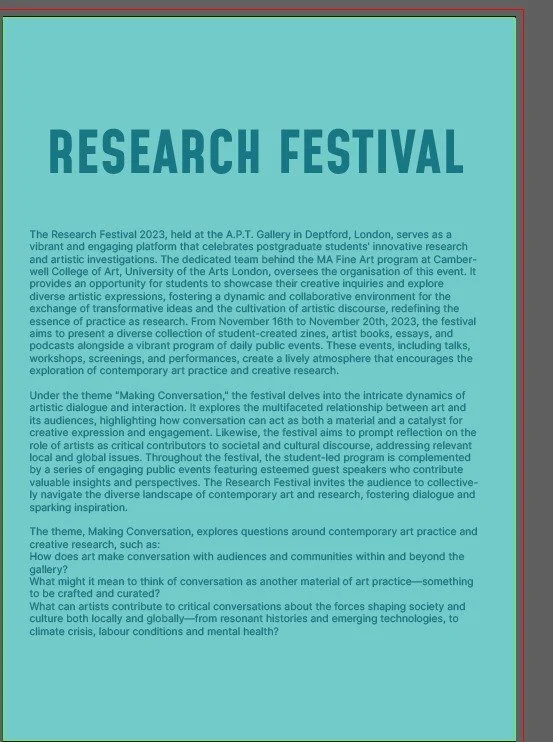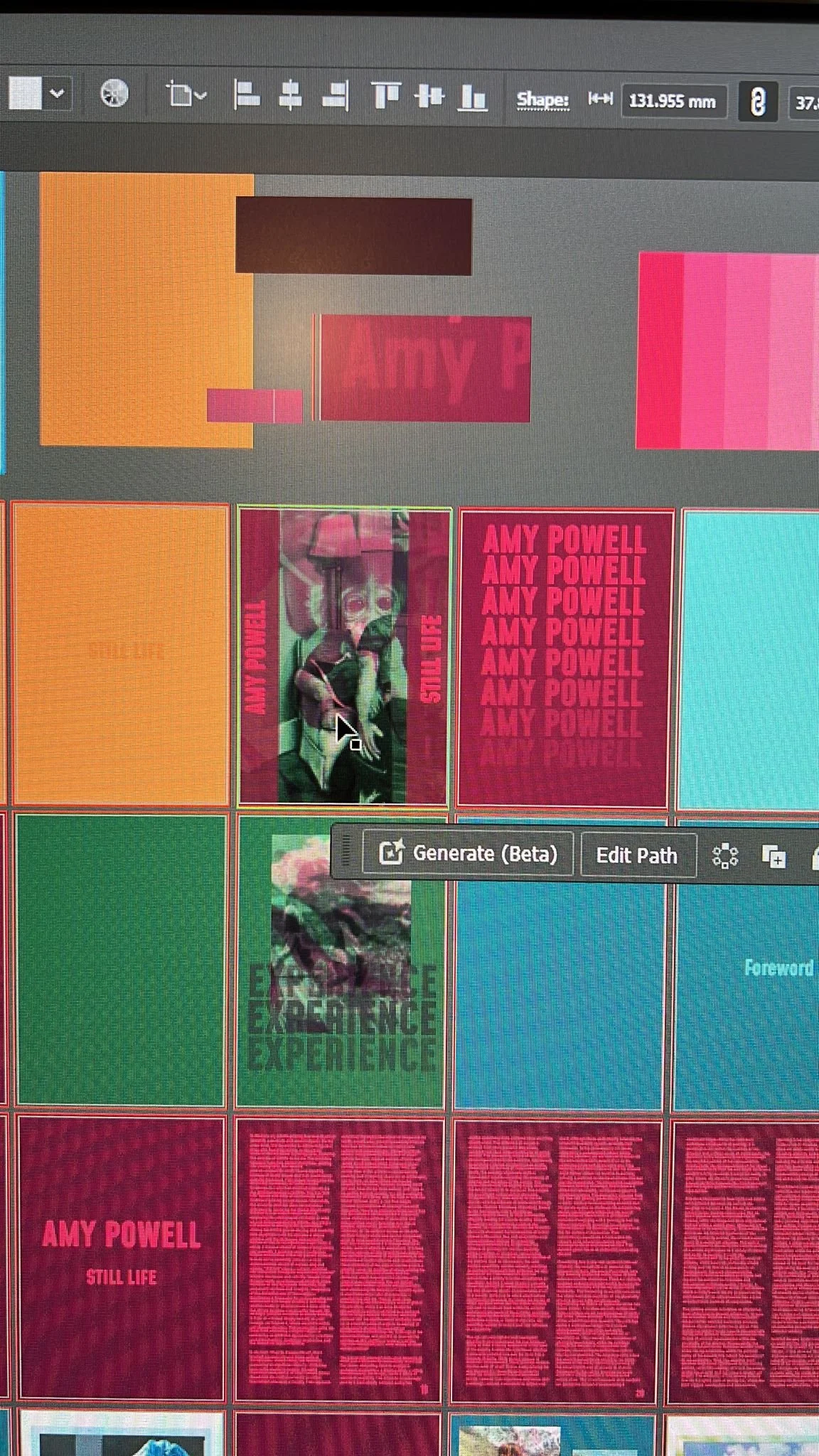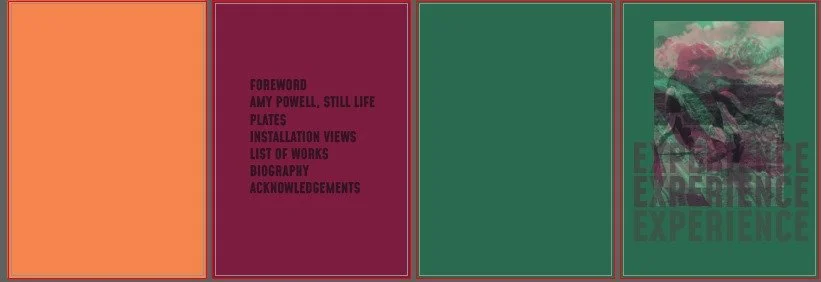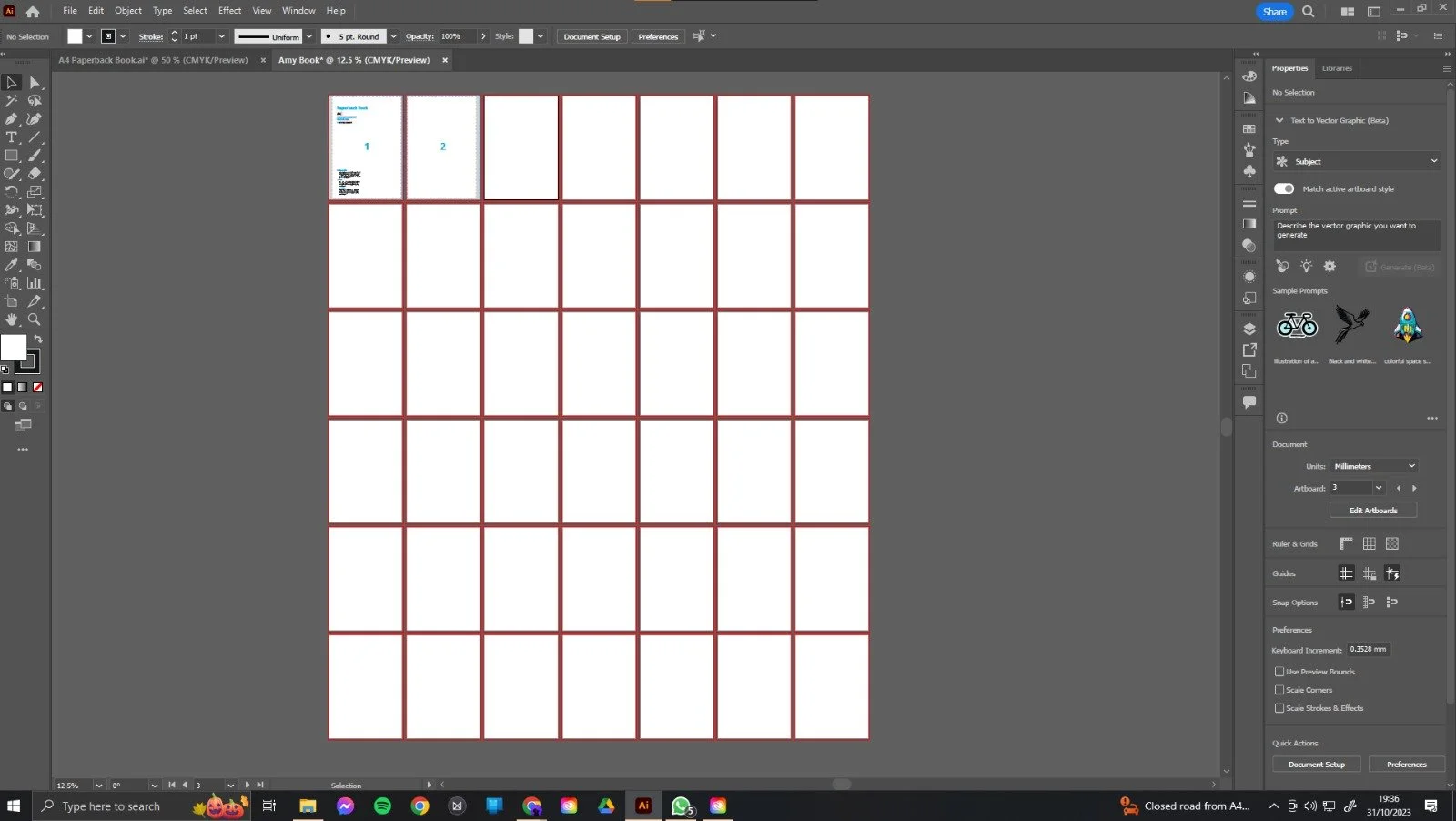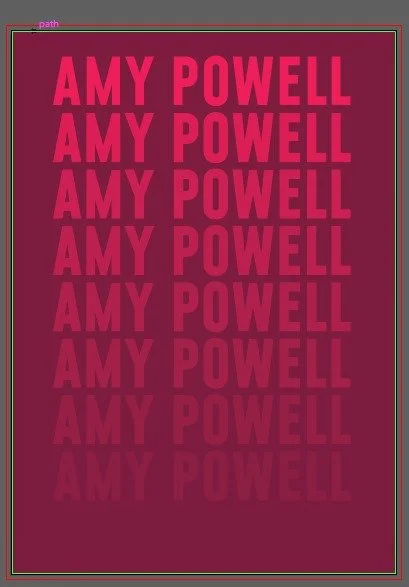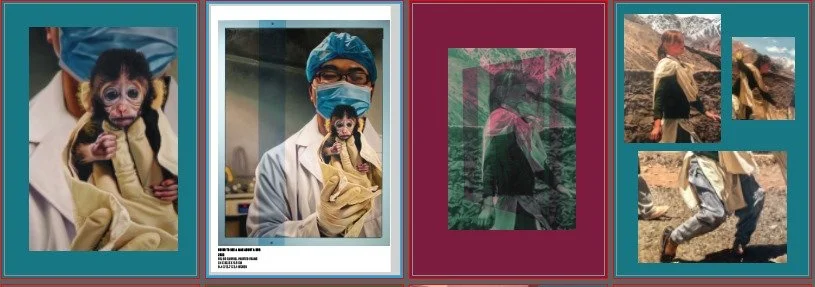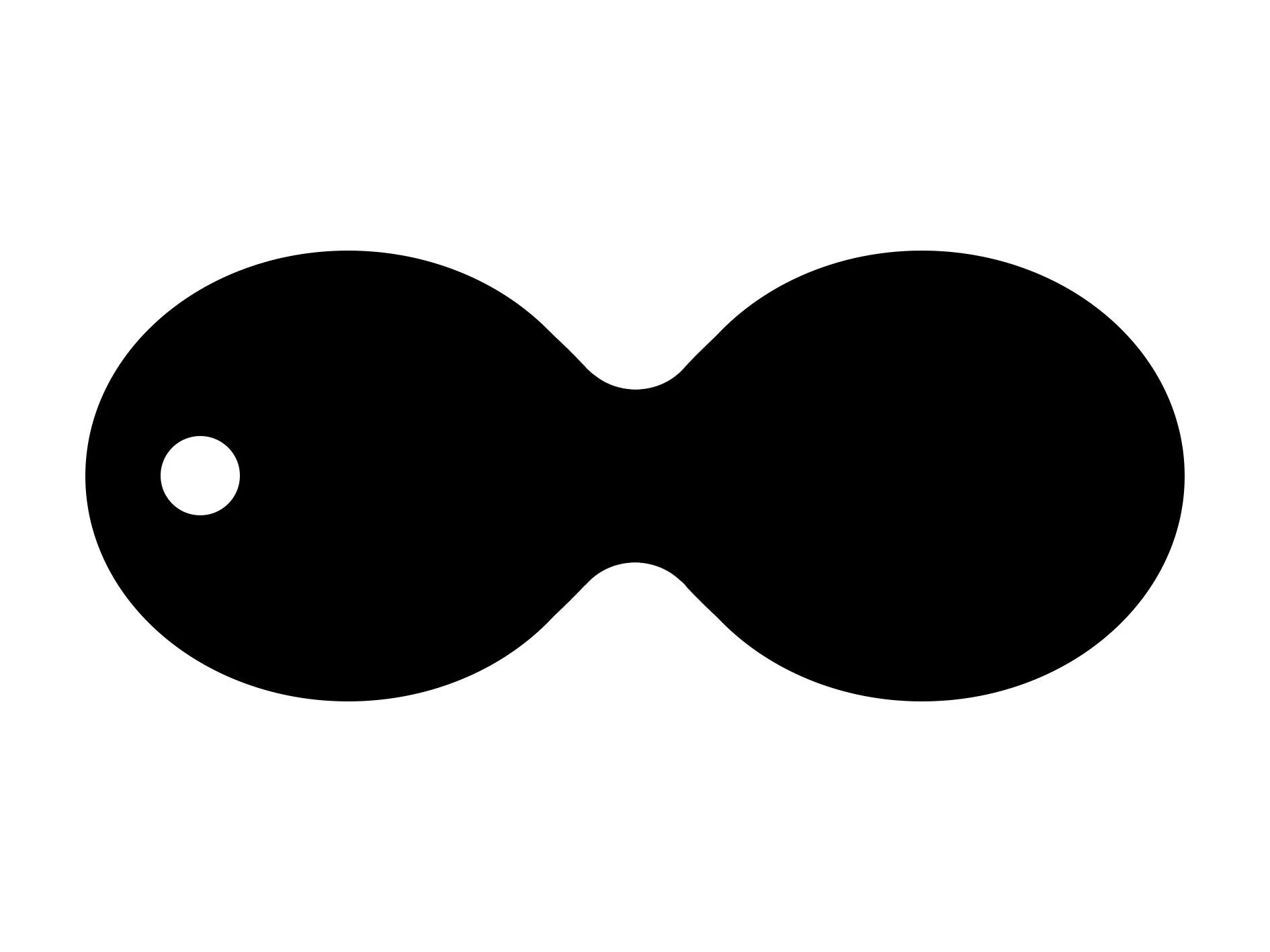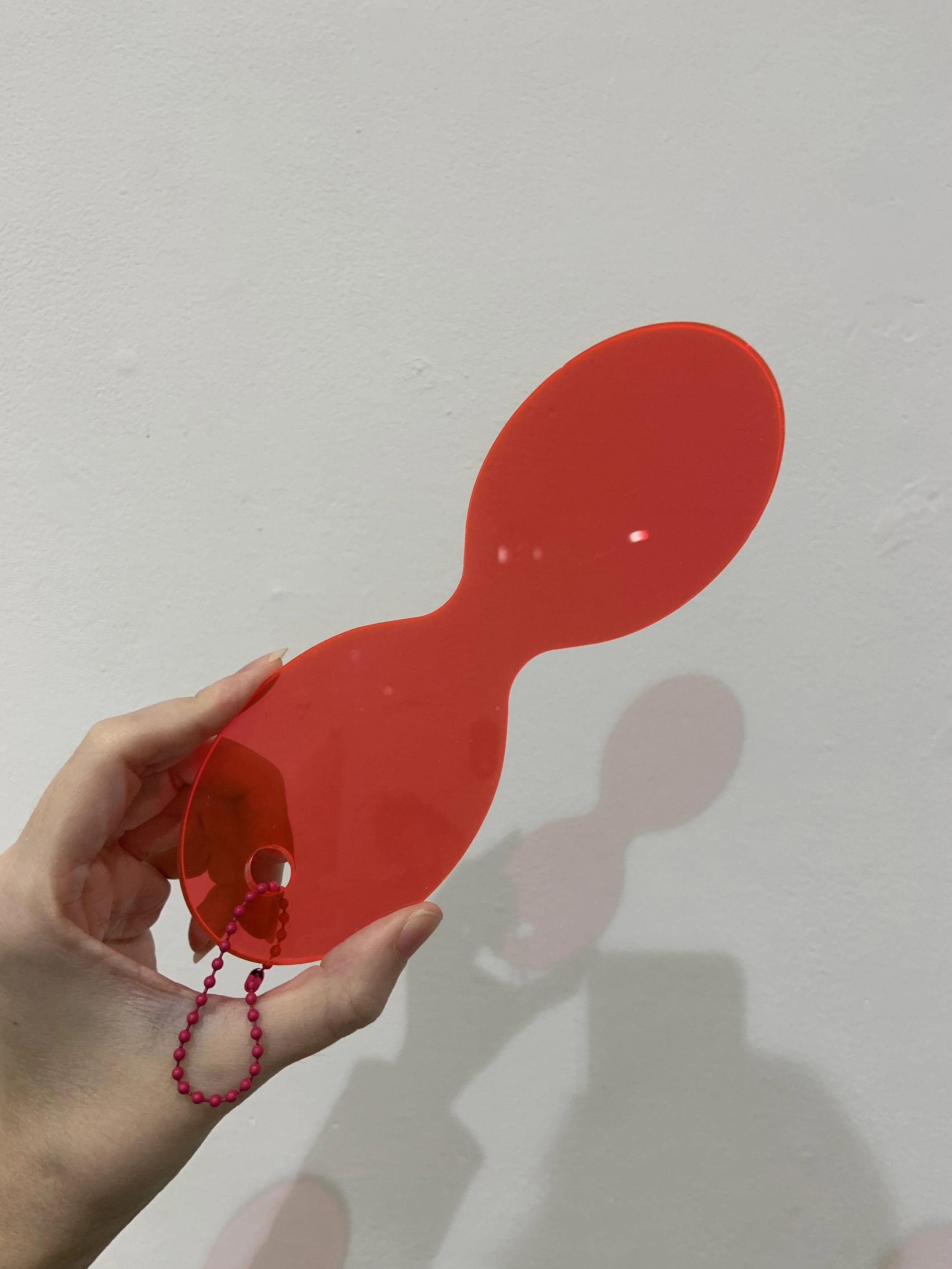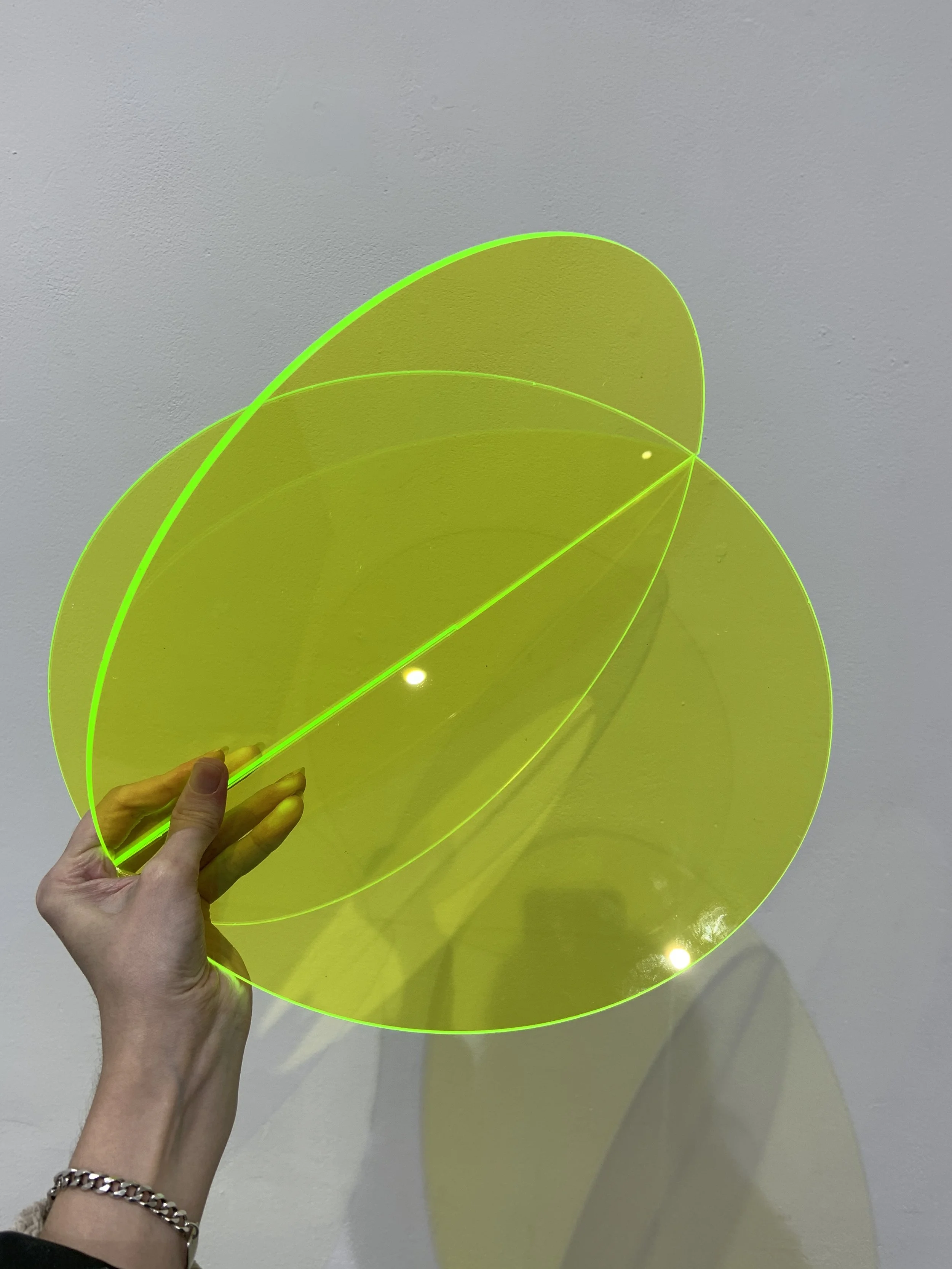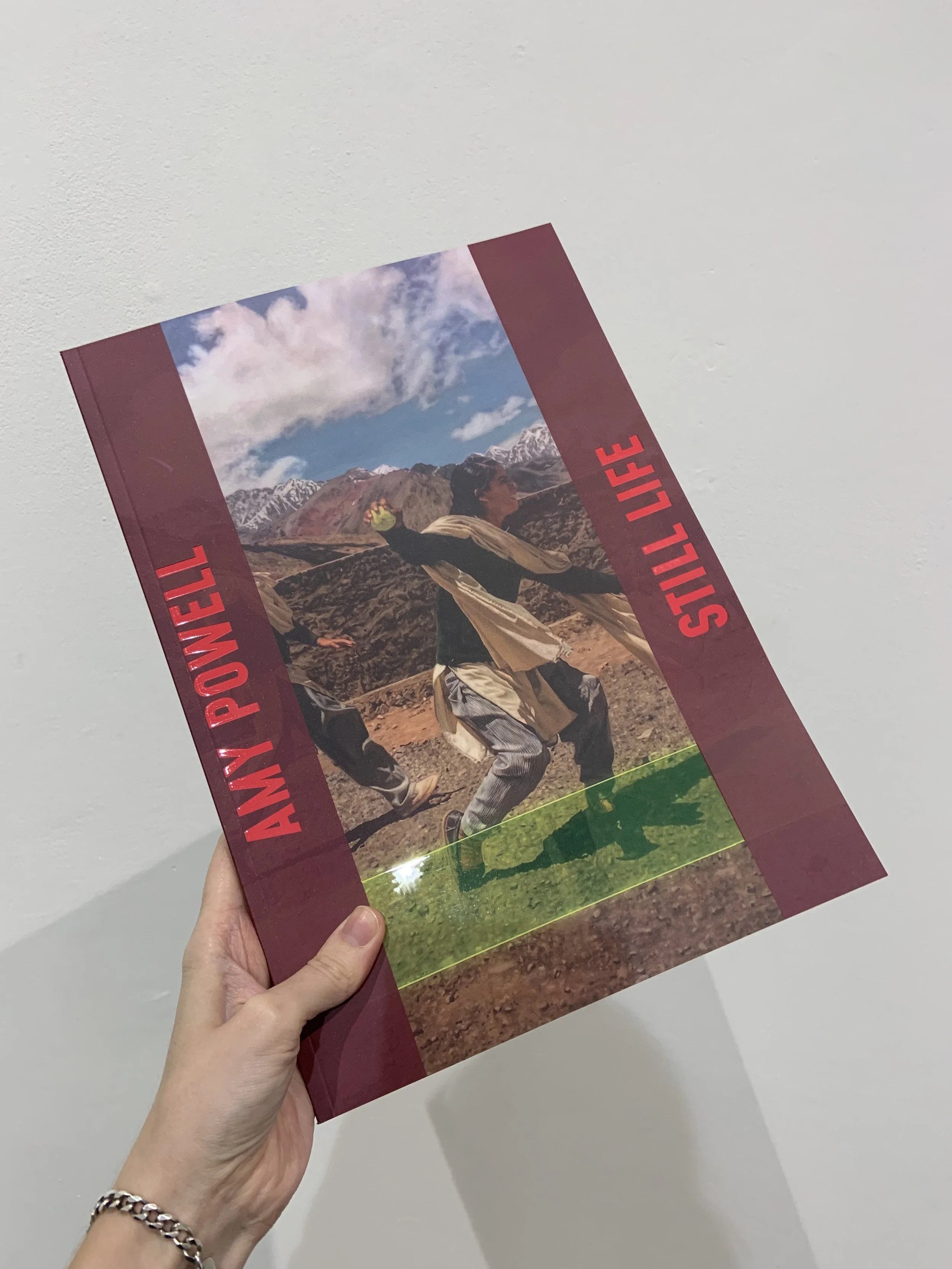Unit Three Research Festival
Research Festival
In anticipation of the upcoming research festival, my initial plans revolved around hosting an in-depth oil painting workshop. The goal was twofold: not only did I aim to contribute to the vibrant research community, but I also sought a sustainable way to nurture my artistic endeavours through freelancing. My ambition for the workshop was to delve into the depths of the alla prima oil painting technique, focusing intently on achieving a lifelike portrayal through a meticulous exploration of Line, Value, and Colour. To further refine the artistic process, I intended to emphasise using a limited palette, fostering a structured framework that would guide participants towards mastering the intricacies of realistic representation. As I delved deeper into the concept, I found myself immersed in the development of a draft publication that would complement the workshop. The following screenshots depict the preliminary stages of the draft publication that had been meticulously curated to complement the workshop. I plan to cultivate this publication further, even after the conclusion of the course, with the aspiration of nurturing its evolution into a more comprehensive and refined publication to aid my professional practice with freelance workshops.










However, after meticulous consideration, I made a significant shift in my plans. Fuelled by both financial constraints associated with the procurement of workshop materials and a burgeoning belief in the advantages of an artist book for my artistic practice, I opted to create an artist publication for the research festival instead. My decision was underpinned by an immersive exploration into the realm of image reproduction, prompting a realisation that an artist's book could serve as a compelling medium to challenge the conventional perception of painting as a self-contained object. This shift in focus encourages readers to actively engage in critical analysis, urging them to contemplate the intricate processes involved in visual culture's production, reproduction, and representation.
While exploring artist books, I encountered Johanna Drucker's "The Century of Artists' Books," which proved invaluable for my research. The book comprehensively explores the historical evolution and significance of artists' books. Drucker's meticulous examination of the intersection between art and the book form offers valuable insights into the multifaceted nature of these works as artistic objects. By contextualising the development of artists' books within the broader framework of art and literature, Drucker underscores the critical role that these books play in challenging conventional notions of the book as a mere vessel for text, emphasising their significance as complex and visually engaging art objects in their own right. Drucker emphasises, "The artist's book is an intermedia form, an embodied expression of an idea or a sequence of ideas in physical form." (Drucker, 2004) This assertion underscores the intrinsic complexity of the artist's book as more than just a vessel for text, highlighting its role as a visual and tactile embodiment of artistic expression. Drucker's analysis situates artists' books as dynamic and visually engaging works of art, challenging conventional notions of the book form and expanding the boundaries of artistic expression.
Here, I was also reminded of Walter Benjamin's "The Work of Art in the Age of Mechanical Reproduction", which serves as a foundational text for comprehending the transformative impact of technological advancements on contemporary art, including the domain of artist books. Benjamin's insightful analysis of the diminishing aura of the original artwork in the face of mass reproduction provides a critical lens through which one can examine the shifting dynamics of artistic production and dissemination. In the context of artist books, Benjamin's ideas shed light on how the reproducibility of these works challenges traditional notions of the unique, singular art object, redefining the boundaries of artistic authenticity and originality. Benjamin posits, "Even the most perfect reproduction of a work of art is lacking in one element: its presence in time and space, its unique existence at the place where it happens to be." (Benjamin, 2008) This assertion highlights the core of Benjamin's argument regarding the diminishing aura of the original artwork in the face of mass reproduction. In the context of artist books, this concept challenges the traditional notions of artistic authenticity, emphasising how the reproducibility of these works alters the perception of the unique, singular art object.
Diving deeper into this new direction, I drew inspiration from three remarkable artist books, each contributing to my evolving perspective on disseminating visual information. The first, Jennifer Packer's "The Eye is Not Satisfied with Seeing," showcased a captivating interplay of coloured pages, subtly weaving an intricate narrative that demanded prolonged observation and introspection. In Viviane Sassen's "Hot Mirror," surrealistic elements seamlessly intertwined with translucent text and innovative layout designs, fostering an intriguing visual experience transcending traditional boundaries. Amongst my sources of inspiration, the enigmatic "Media Issue 2" left an indelible mark on my creative consciousness. Adorned with artist illustrations and equipped with red acetate spectacles, this publication skilfully unveiled the hidden layers within its pages, inviting readers to explore the multifaceted nature of its content. These exemplary works shaped my approach and fuelled my determination to create something equally compelling and thought-provoking.
Sassen's surrealistic influences were palpable, intricately interwoven within her publication. The clever utilisation of a transparent book sleeve, embellished with ethereal text and an enigmatic purple circular shape, injected an element of mystique that veiled and altered the underlying imagery. Moreover, the seamless integration of backwards-arranged text on translucent paper, which metamorphosed with each turn of the page, unfurled a narrative of its own, inviting readers into an immersive dance of interpretation and perception.
Packer's exhibition catalogue, on the other hand, tantalised the senses with its enigmatic play of colours, often rendering the text discernible only through subtle gradations of hue. This ingenious manipulation not only mirrored the very essence of its title, "The Eye is Not Satisfied with Seeing," but also encouraged a prolonged engagement, unveiling hidden layers that beckoned to be unearthed with a discerning eye, much like the paintings themselves.
Media Issue 2, an innovative exploration of duality and perspective, redefined the very notion of interconnectedness and relation. A spectacle in its own right, each magazine was adorned with a pair of enigmatic red acetate spectacles, unlocking the duplicitous nature of its pages. Centered around the symbolic "two," this remarkable issue was a reverberating testament to the power of juxtaposition and symbiotic coexistence.
As my vision for the artist publication began to take shape, the concept of an interactive experience emerged as a central premise. I decided to incorporate a laser-cut plastic visor to view the pages, inviting the audience to actively engage with the content. This visor served as a conduit, enriching the optical journey through the pages and encouraging a fresh perspective on the nuances of image consumption. Within the book's carefully curated imagery, I experimented with a duotone colour exposure effect, creating a dynamic interplay between images seamlessly transitioning from one to the next. By utilising the contrasting colours on the colour wheel, I sought to symbolise the fluidity of the images, encapsulating the perpetual circulation and interconnectedness of visual imagery. Determining page colours and selecting a suitable hue for the plastic visor were carried out through a methodical process involving the integration of overlaying translucent plastic samples with Adobe Photoshop. This technique entailed superimposing various translucent plastic samples over the screen until a harmonious combination of colours was discerned. This iterative process allowed for an informed decision-making approach, culminating in selecting a harmonious blend of colours that resonated with the overarching aesthetic vision. Subsequently, the choice of colour palettes for the pages was informed by utilising the website "Coolors," which generates diverse colour palettes. These generated colour palettes were then meticulously adjusted to align with the specific hues incorporated with the painted frames of each painting. Moreover, developing vectors within Adobe Photoshop was pivotal in shaping the laser-cut plastic visors and the corresponding bookstand intended for presentation at the research festival. For the purpose of display, the intention is to affix the plastic visor to the bookstand via a chain, allowing users to examine the book using the plastic visor during the Research Festival. In parallel with the design of my business cards, I opted to integrate Spot UV technology on the book's front cover. This choice was made to emulate the visual effect of the plastic medium utilised in the artwork, thereby enhancing the illusion of replication. The images provided below offer a visual insight into the intricacies of the design process, underscoring the meticulous craftsmanship and attention to detail that characterised this creative endeavour.
Acrylic visor vector
Acrylic bookstand vector one
Acrylic bookstand vector two
The visor
The bookstand
Amy Powell Still Life publication with spot uv on the front cover
Here is an excerpt from the Foreword of the publication, intended to offer a comprehensive elucidation of my contemplations and concepts encapsulated within this work:
This publication is presented in conjunction with the Research Festival 2023, providing a valuable opportunity to delve deeper into the critical research inquiries and contexts that have surfaced during my engagement with the MA Fine Art: Painting program at Camberwell College of Art, University of the Arts London. The choice to present an artist's book stems from a motivation to confront the notion of painting as an autonomous and transcendent entity, urging readers to critically assess art’s production and dissemination. While this publication assumes the form of an artist's book, it embodies a distinct artistic expression that transcends the traditional confines of visual perception. It aims to represent a significant departure from the conventional understanding of artistic production and holds a weight of its own as a unique and undeniable work of art. The book’s title, Still Life, originates from the exploration of the perpetual circulation of images, with a particular focus on the disjointed simultaneity inherent in today's media landscape. The project creatively expands on the historical concept of still life, integrating elements from both traditional painting categorisation and contemporary advancements in photography. It encourages the viewer to slow down, to still. The text accompanying the work serves as a vital exploration of the practical and critical dimensions of my artistic practice to date. In this publication, the text serves as a reference point, intended to be read in conjunction with the images and the underlying inquiries that thread through them.
This book aims to provide an exploration that transcends the traditional boundaries of visual representation. Within these pages, you will encounter a unique and interactive experience made possible by the use of a coloured visor that accompanies the artwork. This book is not merely a collection of static images but a dynamic journey that challenges the very essence of visual perception. By incorporating the coloured visor, I invite you to engage actively with the artwork, allowing your interaction to shape and transform the images before you. Through this innovative approach, I encourage a deeper understanding of the multifaceted nature of artistic expression and reception. The coloured visor serves as a tool to prompt introspection, inviting you to question the subjective nature of interpretation and the fluidity of visual representation. This journey beckons you to reconsider the conventional boundaries of art objects, offering a fresh perspective on the dynamic relationship between the viewer and the artwork. I hope this book ignites your curiosity and encourages you to embrace the transformative power of interactive engagement within the realm of visual culture.
By incorporating elements such as interactive components, innovative layouts, and multimedia integration, the book itself can become an immersive artistic experience. Through this approach, the traditional boundaries between the artwork and its medium are blurred, prompting readers to question the very nature of artistic reproduction and its relationship to the physical object. By encouraging readers to engage critically with the processes of art's production, reproduction, and representation, the book serves as a dynamic platform for exploring the multifaceted dimensions of visual culture and the intricate interplay between artistic creation and dissemination. This approach not only expands the traditional understanding of what constitutes an artwork but also invites a more nuanced consideration of the complex dynamics between the artist, the artwork, and its audience.
Vision has long been prized as the primary cognitive sense for comprehending the world, and it continues to exert significant influence over the emerging technological tools that fabricate virtual realities. While sight is the primary sense associated with painting, the unique flexibility of this medium allows for an exploration of synesthetic possibilities, where it creatively engages our visual perception to evoke and awaken our other sensory experiences and sensations. This heightened sensory experience is further emphasised by utilising a plastic visor within the interactive book, actively engaging the reader's perceptual faculties. This comprehensive book includes paintings and an installation completed during the MA program, as well as an earlier artwork called "Fifteen Love," which marked the inception of my exploration into the ongoing circulation of images. Created before my enrolment in the MA program, this seminal work represents the first instance in which I incorporated acrylic plastic into my artistic practice as a perspectival tool to challenge and reshape our interaction with and consumption of visual information, a concept I have continued to develop and resolve throughout my tenure as a postgraduate student at UAL.
References:
Benjamin, W. (2008). "The Work of Art in the Age of Mechanical Reproduction." In H. Arendt (Ed.), Illuminations: Essays and Reflections (pp. 217-251). Schocken Books.
Drucker, J. (2004). The Century of Artists' Books. Granary Books.


